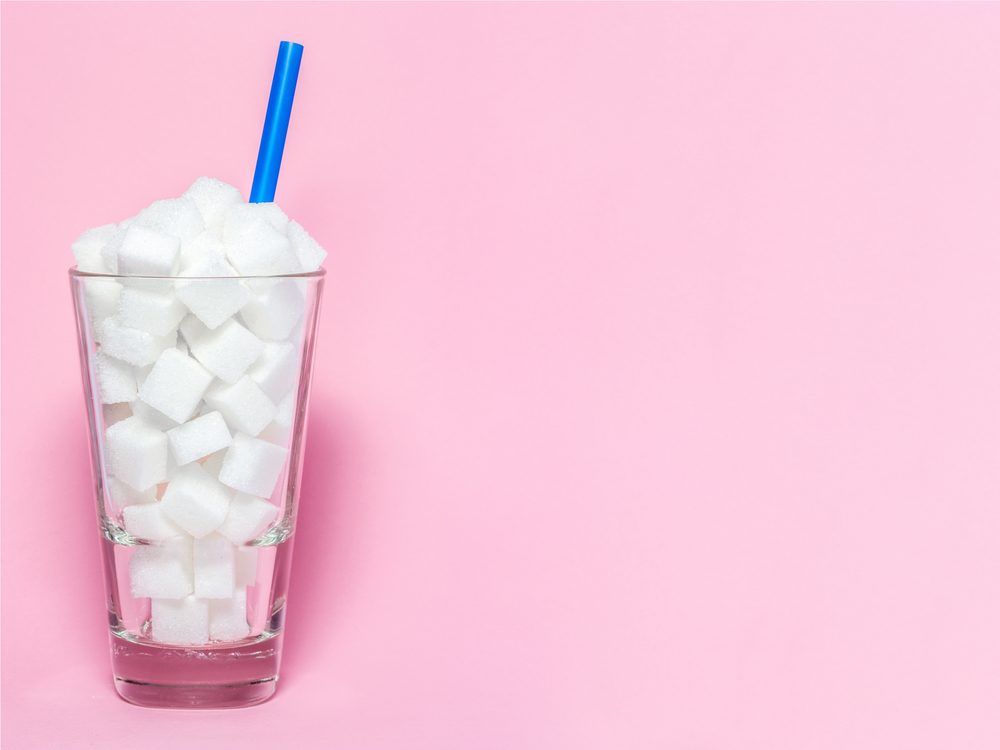
Step 1: Realize what’s going on
One moment you’re wired; the next, you’re making a beeline to the couch. What gives? Your body goes on a physical and emotional roller coaster after too many sweets. “The minute you put a sweet in your mouth, you get a surge of dopamine, a feel-good hormone with addictive properties,” says Amanda Bontempo, RD, a nutritionist at NYU Langone’s Laura and Isaac Perlmutter Cancer Center.
As sugar floods your bloodstream, the pancreas releases insulin to control blood glucose levels. This suppresses the “fullness” hormone leptin, which makes your brain give you the green light to grab more candy. Glucose is rapidly digested, and your spiked dopamine and blood sugar levels fall quickly.
“The crash depends on the person. It can be 15 minutes to a couple of hours after eating,” says Bontempo. “Your instinct is to eat more sugar to get another jolt of energy, but it’s really important to resist. Once your willpower bank is tapped, it becomes increasingly challenging to make healthy choices.”
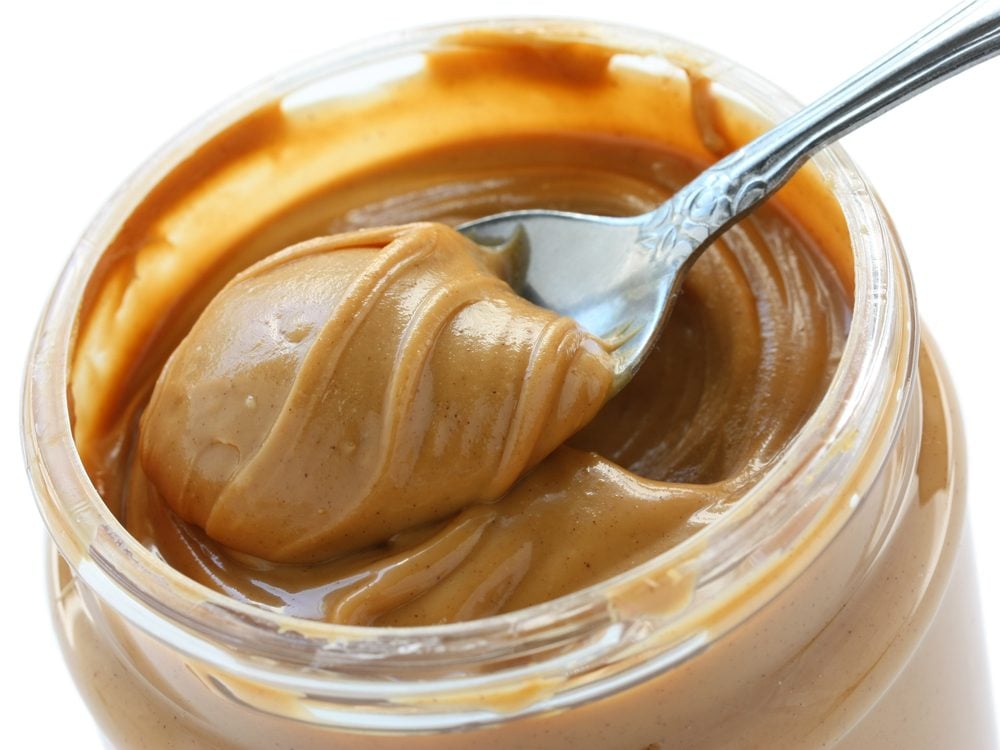
Step 2: Have a spoonful of peanut butter
After a sugar binge, you may want to swear off all calories. However, eating food with other nutrients helps ward off that undesirable sugar crash caused by quick digestion. “A spoonful of peanut butter or handful of nuts gives you fat and protein to slow digestion,” says Jennifer Powell Weddig, PhD, RDN, a professor of nutrition at Metropolitan State University of Denver. “Or try hummus with vegetables, which have fibre that helps slow the absorption of simple sugars.”

Step 3: Take the stairs
Resist the temptation to nap. “Get moving,” says Bontempo. “This will help your muscles use the blood sugar instead of just storing it.” It doesn’t have to be a sweaty, hour-long cycling class. Simply walking up the stairs or taking a walk around the block will help.
A study in the journal Diabetes Care found that older adults who walked for 15 minutes after each meal had lower blood sugar levels than those who walked for 45 minutes in the late morning or before dinner.

Step 4: Drink tea with lemon
Green tea and lemon are both diuretics, which means they’ll make you take more bathroom breaks. “You’re not directly eliminating the sugar, but you are forcing your blood to pump through your kidneys faster,” says Bontempo. Remember to also stay well-hydrated with H20, which helps you feel full, and counteracts suppressed leptin levels.
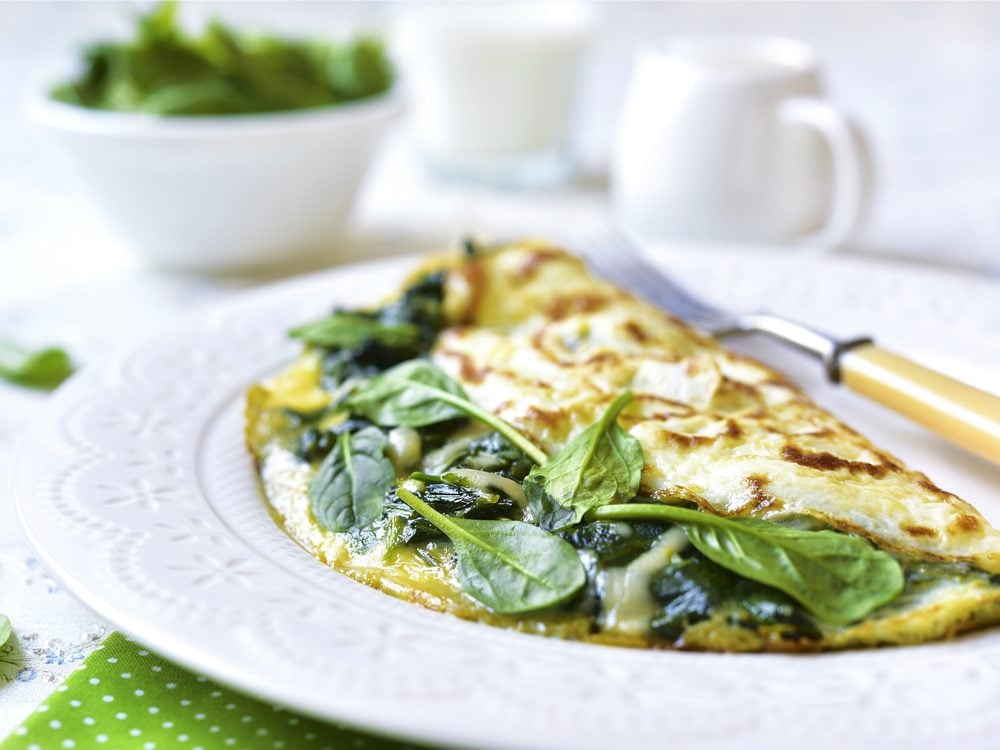
Step 5: Plan tomorrow’s breakfast
A low-sugar, balanced breakfast is imperative the day after a sugar overload. “The ideal breakfast is high in protein, moderate in fat, and low in carbs,” says Bontempo. “The protein and fat keep you full, and fewer carbs encourage you to burn yesterday’s stored-up sugar energy.”
Try a vegetable omelette with a slice of whole-grain toast, topped with avocado slices. Go light on the fruit; it may be the natural kind, but it still has sugar.
Another tip nutritionists stress: Don’t go overboard on coffee. “It’s a no-calorie drink, but we often add a lot of creams and sugars to it,” says Jason Ewoldt, MS, RDN, a wellness dietitian the Mayo Clinic Healthy Living Program. “What starts off as a 0-calorie option turns into several teaspoons of sugar before you even start the day.” Consider tea or have coffee with just a dash of cream.
Check out these 11 Things That Might Happen to Your Body if You Switch from Coffee to Tea!
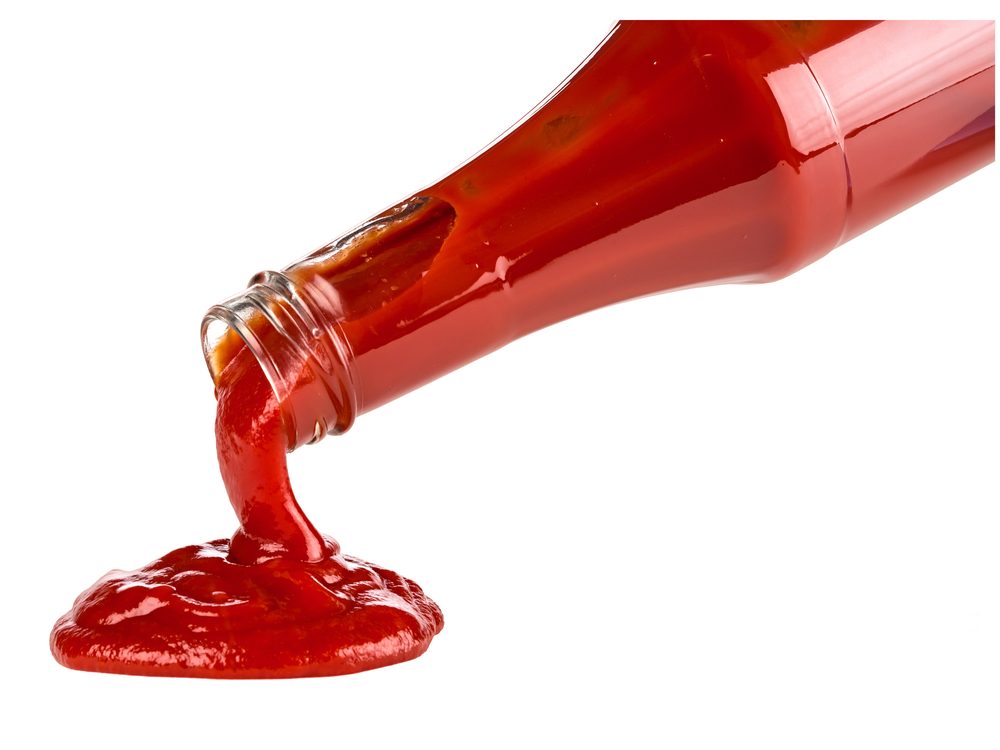
Step 6: Put the kibosh on condiments
Dressings, sauces, and other condiments may hinder your healthy-eating efforts. One tablespoon of ketchup, for example, has 4 grams (1 teaspoon) of sugar.
“Many condiments can be high in sugar, but it’s tricky because there are essentially more than 60 different names for sugar,” says Ewoldt. “When you’re looking at the label, it might not say sugar, but it could say high fructose corn syrup, dextrose, rice syrup, or molasses, which are all essentially sugar.”
Instead, drizzle leafy greens with olive oil or spread avocado on a turkey burger.
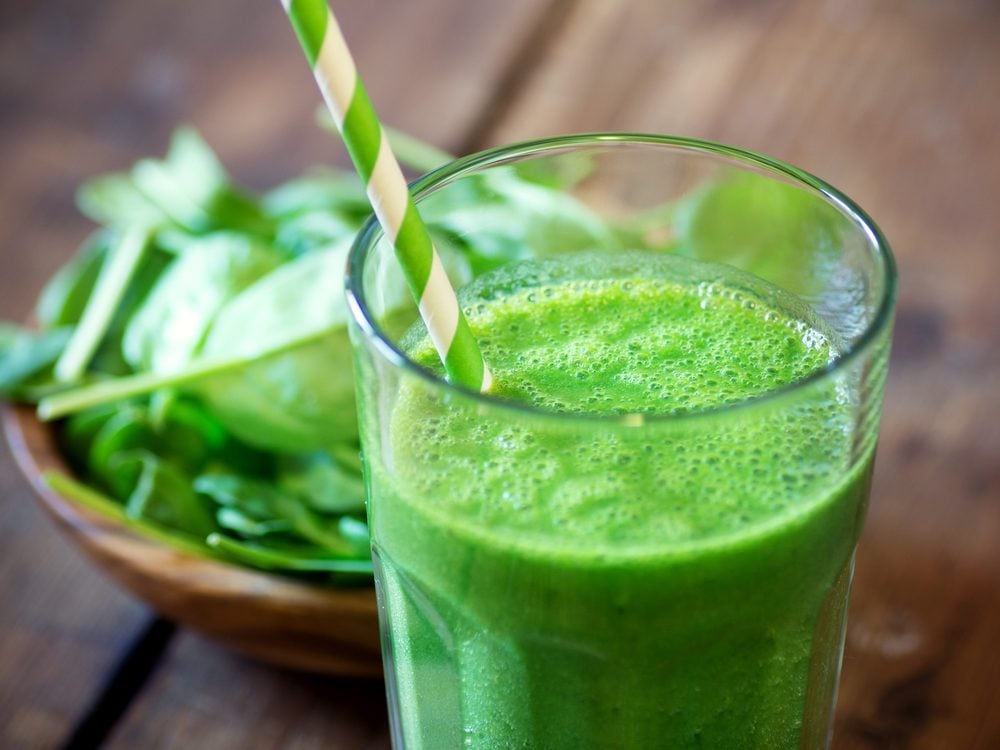
Step 7: Have a smoothie
Blend a veggie-rich smoothie the day after a binge for satiating fibre, but go easy on the fruit and juice. “It’s easy to drink way too much sugar,” says Bontempo. “It may come from the fruit and be natural sugar, but you still might drink way more than you’d ever eat.”
Mix one part fruit to two parts vegetables, like spinach or kale. Add protein, such as unsweetened yogurt or nut butter. Skip a juice base, and instead use unsweetened soy milk, unsweetened almond milk, or unsweetened green tea (it’s flavourless in a smoothie, but sneaks in healthy antioxidants).
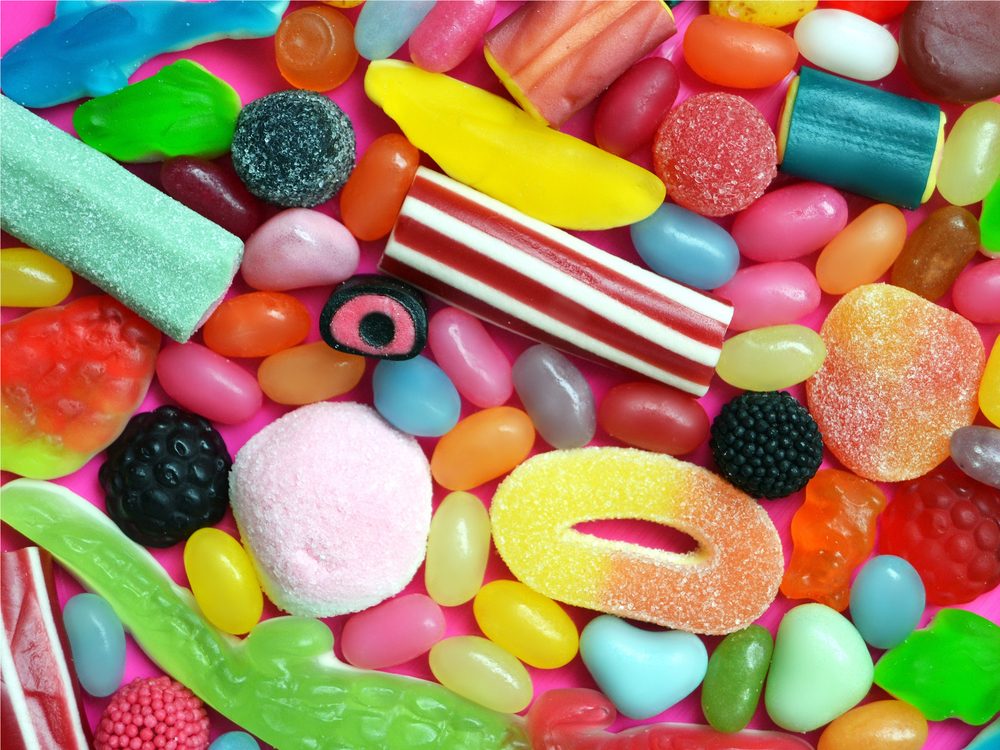
Step 8: Banish the leftovers
Your brain may still be craving that dopamine rush, so remove any temptation. “Get rid of the candy,” says Bontempo. “Donate it or bring it to work.” In an International Journal of Obesity study of 100 participants, researchers found that those who kept food in plain sight were more likely to be obese and ate more sugar and less healthy food than participants with a normal weight.
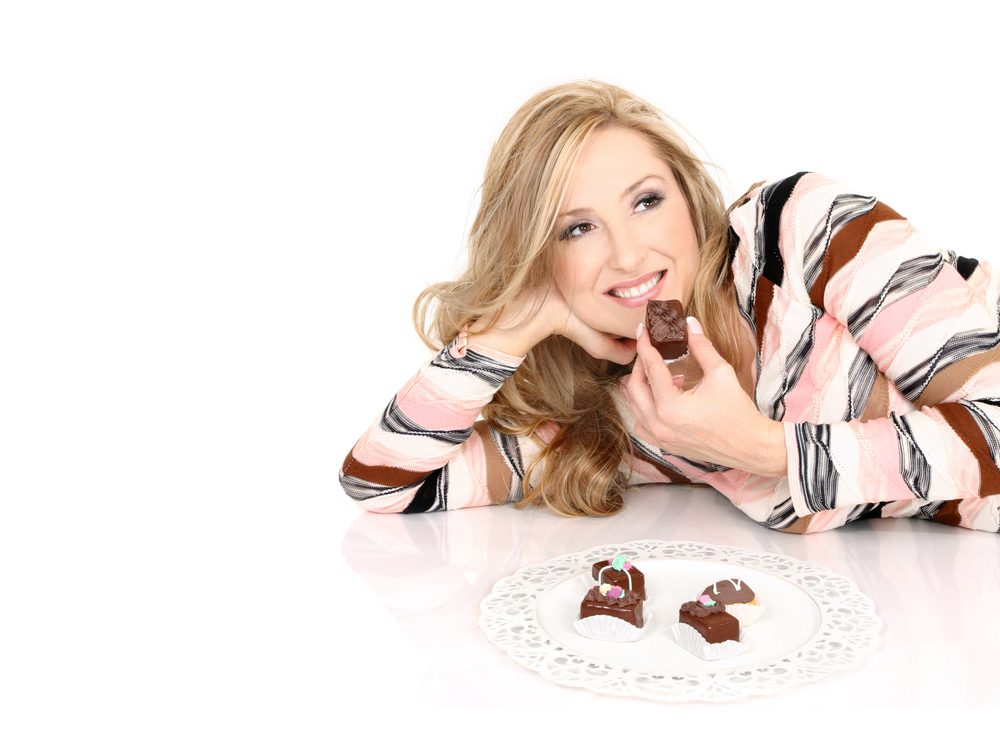
Step 9: Forget the guilt trip
Take a deep breath and go easy on yourself. “Conventional research tells us it takes about 3,500 calories to gain a pound of fat,” says Bontempo. “That’s the equivalent of about 44 Fun Size Snickers bars, or nearly 60 Fun Size Skittles bags. Even if you ate a lot of candy, it doesn’t directly translate into weight gain.”
The next time you have a treat, practice savouring and enjoying it. A New Zealand study of 300 people found that people who associate eating chocolate cake with guilt were less successful in maintaining their weight compared with those who viewed it as a celebration.
“A Hershey’s kiss takes forever to melt in your mouth, and it’s a lot of chocolate,” says Weddig. “Being mindful and eating things like that provides a lot more satisfaction than just chewing it once or twice and then swallowing.”